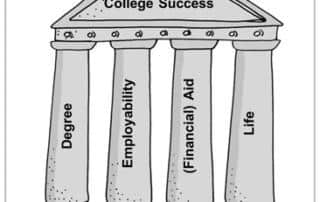

Nonprofit leaders around the country are working hard to continue to meet their important community missions in the midst of the COVID-19 crisis. With this in mind, we’ve been engaged in analysis around which aspects of the Standards for Excellence program could play a role in helping prepare a nonprofit for the turbulent and uncertain times that we are all facing. We’ve heard from nonprofit leaders that they are grateful that the Standards for Excellence program helped them to develop policies, tools, and plans that help them weather the current situation— things like comprehensive disaster plans, remote work policies, exemplary board practices, and treating donors with respect. In addition to these undoubtedly crucial areas, another key item many nonprofits are leaning on is their communication policy and their crisis communications plan.
The Standards for Excellence: An Ethics and Accountability Code for the Nonprofit Sector, states that “A nonprofit should have written, board-approved administrative policies that are periodically reviewed by the board. At a minimum, these policies should address issues such as crisis and disaster planning, information technology, communications, and social media.”
Implementing a crisis communications plan is an essential part of a nonprofit’s disaster preparedness efforts. In the event of a crisis, a nonprofit must be able to communicate with all stakeholders with confidence, speed, and accuracy. Protecting the positive public image of your organization and ensuring the public confidence are the main goals of your crisis communications plan.
When a disaster or crisis arises, your organization should have a well-considered plan of action to communicate both internally and externally to all stakeholders, including the public and media. This plan identifies who will (and will not) speak on behalf of the organization, how the messages will be developed, how all staff and board members will be prepared to deal with inquiries, and how the response will be evaluated afterwards so that improvements can be made to the plan, as needed. While its most advantageous to have a crisis communications plan in place prior to the onset of a disaster, for those who have not taken that step, there is no time like the present- it can also be beneficial to develop your plan even in the midst of a crisis, particularly when the crisis appears to be lengthy and drawn out.
In addition to your nonprofit’s communications plan addressing general topics like what systems the organization has in place for communications, social media usage/engagement, and who is responsible for selecting the communications system, a communications policy and plan will also address topics like, who is in charge of creating the crisis response(s)? Specifically looking at crisis communications, nonprofits are encouraged to have contingency plans for major crisis that may affect your organization. Such a plan should also address preventative measures and adaptive measures (i.e. addresses measures to prevent the disaster and addresses measure to adapt to the disaster) and should address communications at all levels of the organization.
The Standards for Excellence educational packet on Administrative Policies includes helpful resources such as steps to developing a crisis communication plan, Sample Emergency/Crisis Communications Plan, and a Sample Communications Policy.
This educational resource packet and the full series of all packets – including sample policies, tools and model procedures to help nonprofits achieve best practices in their governance and management – can be accessed by contacting a licensed Standards for Excellence replication partner,– one of the over 150 Standards for Excellence Licensed Consultants, or by becoming a member of the Standards for Excellence Institute.
We share our sincere wishes for your continued good health and patience as we all navigate these challenging and uncertain times.



